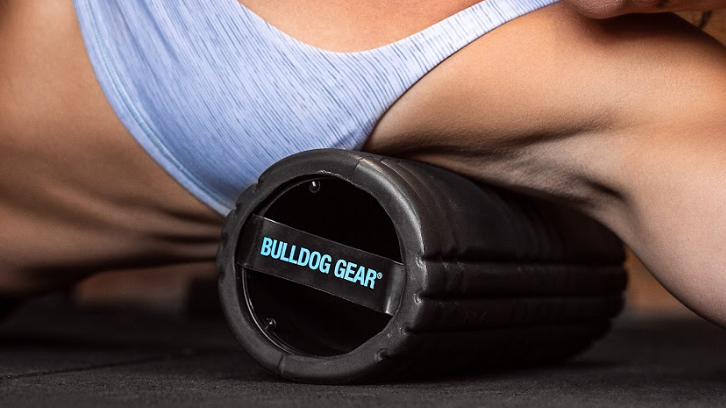|
28/07/2022 | Andrew Tracey Andrew Tracey is a long time collaborator with Bulldog Gear. A coach, writer and current fitness editor of Men’s Health Magazine, he has been in and around the fitness industry for the past 17 years. Having enjoyed and endured a number of disciplines from endurance racing, to strongman, to Crossfit AT enjoys getting neck deep in the practice just as much as the theory. |
‘The Hack Squat’, named after early-20th century strongman, author and philosopher George Hackenschmidt, (and not to be confused with the dedicated squat machine of the same name) shares more in common with the barbell deadlift than any traditional squat varieties.

Although an awkward looking lift (and it is, undoubtedly an awkward lift, especially at the top end of the rep where anyone with amply developed glutes will struggle), it’s far more effective than it’s lack of appearance in most modern lifting programmes suggests.
The bottom portion of the Hack Squat could quite easily be argued to be much more anatomically friendly than a conventional barbell deadlift; with the centre of mass placed directly below your midline, the resistance profile is akin to a hex bar lift, in that it allows for a more upright torso, far more leg drive and a much lower risk of losing tension and compromising the lower back.
If you’ve found yourself struggling with the traditional barbell deadlift- whether through injury, lack of mobility or just sheer boredom, maybe hopping in the DeLorean and taking a trip back in time to revisit this turn of the century feat of strength could be just the tonic to get you pulling big numbers from the floor again?
To perform the lift properly- load up your barbell with a light weight to begin with (although full-sized bumper plates are preferable to reduce range-of-motion) and position yourself directly in front of the bar with feet around shoulder width apart, facing away from the barbell. Keeping your torso upright, squat down and grasp the bar with an overhand grip. Take a deep breath and create three-dimensional pressure throughout your core before driving hard through the floor, standing upright with the bar. Reverse the movement, lowering the bar back to the ground, and repeat.
Throughout the lift keep your hips low, shoulders high and arms straight- think of them as meaty hooks, they shouldn’t bend at all (take it from someone currently awaiting surgery for torn biceps).
‘The Hackenschmidt Lift’, whilst confusingly similar in name to the Hack Squat, was the original variation of the lift that Hackenschmidt showcased in strongman shows, interviews and during his own training. It involved taking a weight from behind, similar to the Hack Squat, but performing the entirety of the lift on the balls of one’s feet, with knees forward; demanding not only a tremendous amount of strength but also balance, mobility and coordination.

Whilst it’s easy to see why this particular variant isn’t pervasive (despite being a fun circus trick to pit your strengths against), the Hack Squat itself still offers huge value, and it’s a lift all trainees should at least try.
Despite it’s awkward nature and the fact it’s fallen out of popularity, some trainees have gone on to lift up to 400kg with this old school move.



